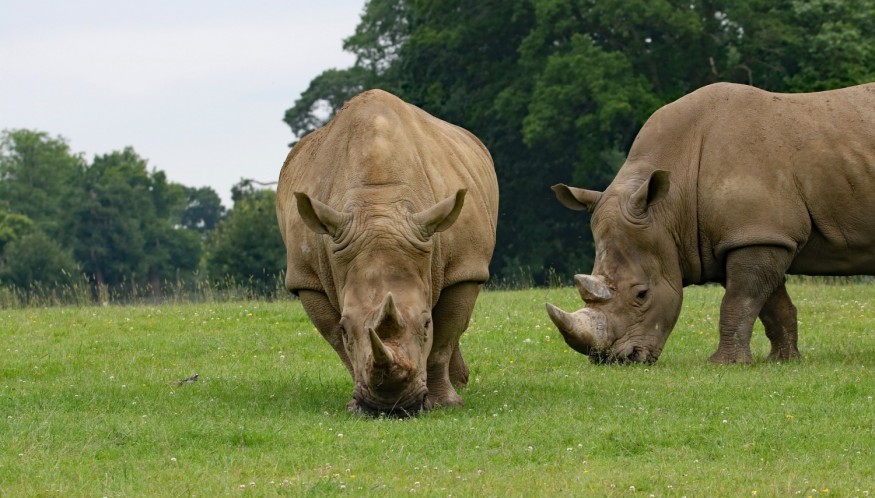
The African Black Rhino is slowly increasing in number as conservation efforts counter the persistent threat of poachers. However, the black rhinos are still considered endangered species albeit it's slow increase in population in Africa of only about 2.5% per year from 2012 up to 2018.
Black Rhinoceros
These animals live in Africa and primarily in grasslands, tropical bushlands, and savannahs. Contrary to their name, black rhinos are not actually black. They probably got their name as a distinction from the white rhino, and as a description to their after wallowing in the mud and they were covered with a dark-colored soil.
Black rhinos have four known subspecies. Their upper lip is prehensile that is adapted to eating trees or shrubs. These animals' gestation period lasts approximately about 15 to 16 months, a mother rhino only gives birth between 2.5 to 3 years and they could live up to 30-35 years.
Intensive anti-poaching efforts have finally resulted in the increase of number to the black rhinos since 1993 with only fewer than 2,300 left from the 65,000 in the 1970s, but now it is already around 5,500 in the wild.
Hopeful Increase of Rhinos
The population growth of the black rhinos of about 4,845 from 2012 and an estimated 5,630 in 2018 provides a glimmer of hope that efforts put into saving this species are paying off. The International Union for Conservation (IUCN) has recorded 116,177 species including 31,030 that are threatened with extinction.
Efforts made in the preservation of the black rhinos serve as a powerful reminder to the worldwide community that conservation works and at the same time, it is obvious that it is no time to be complacent as poaching and illegal trade continue.
Various strategies were used to save the endangered species that resulted in different degrees of success. According to the Australian Broadcasting Company, some rhinos were relocated from their established groups to new areas in an attempt to increase the species' range, keep the population productive and to avoid interbreeding.
In June 2018, 11 black rhinos were moved to Tsavo East National Park in Kenya from Nairobi. Unfortunately, they all died-10 of which because of drinking water that is saltier than they were used to and one from a lion attacked.
Poaching Black Rhinos
Despite that failure, the largest threat to black rhinos is still poaching. Rhino horns are used as traditional medicine and aphrodisiac but are also a status symbol in China to display wealth and success. With a great demand for rhino horns in Asia, the price will stay high and therefore poaching will still continue in Africa, said Paula Kahumbu the CEO of wildlife charity Wildlife Direct.
She added that in enforcing the anti-poaching laws, it would need a military-style approach to protecting these animals. The strong counter-measures taken with the private landowners, range states and communities are having positive effects.
Efforts against poaching have lower its number of cases but the costs of keeping the black rhinos safe have also risen and live sale prices have lowered for the past ten years which reduces the incentives for private landowners and communities to keep these animals safe.
The trend towards rhinos being viewed as a costly liability may threaten to limit the future expansion of their range and numbers since a lot of the black rhinos are conserved on private and community-managed land.
© 2025 ScienceTimes.com All rights reserved. Do not reproduce without permission. The window to the world of Science Times.












